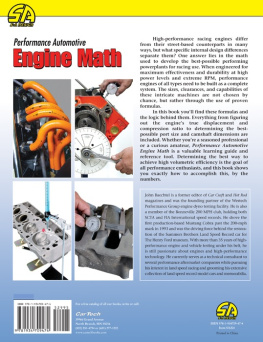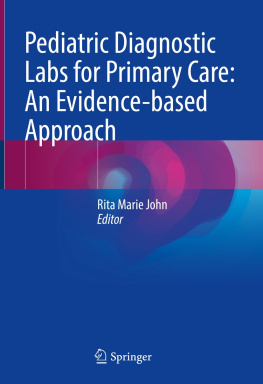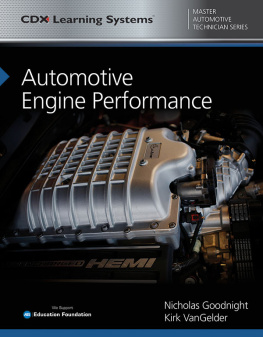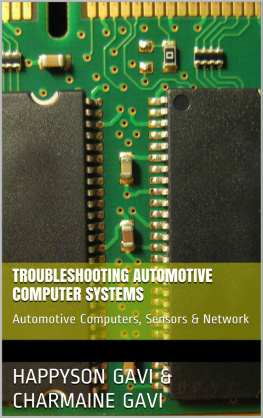HOW TO USE
AUTOMOTIVE DIAGNOSTIC SCANNERS
By Tracy Martin

First published in 2015 by Motorbooks, an imprint of Quarto Publishing Group USA Inc., 400 First Avenue North, Suite 400, Minneapolis, MN 55401 USA
2015 Quarto Publishing Group USA Inc.
Text 2015 Tracy Martin
All photographs are from the authors collection unless noted otherwise.
All rights reserved. With the exception of quoting brief passages for the purposes of review, no part of this publication may be reproduced without prior written permission from the Publisher.
The information in this book is true and complete to the best of our knowledge. All recommendations are made without any guarantee on the part of the author or Publisher, who also disclaims any liability incurred in connection with the use of this data or specific details.
We recognize, further, that some words, model names, and designations mentioned herein are the property of the trademark holder. We use them for identification purposes only. This is not an official publication.
Motorbooks titles are also available at discounts in bulk quantity for industrial or sales-promotional use. For details write to Special Sales Manager at Quarto Publishing Group USA Inc., 400 First Avenue North, Suite 400, Minneapolis, MN 55401 USA.
To find out more about our books, visit us online at www.motorbooks.com.
Digital edition: 978-1-6278-8648-2
Softcover edition: 978-0-7603-4773-7
Library of Congress Cataloging-in-Publication Data Martin, Tracy, 1951
How to use automotive diagnostic scanners / Tracy Martin.
pages cm
ISBN 978-0-7603-4773-7 (sc)
1. Automobiles--Maintenance and repair--Equipment and supplies. 2. Automobiles--Motors--Computer control systems. 3. Automobiles--Pollution control devices. 4. Automotive sensors. 5. Automobiles--Defects--Code numbers. I. Title.
TL152.M276 2015
629.287--dc23
2015005145
Acquisitions Editor: Darwin Holmstrom
Project Manager: Jordan Wiklund
Senior Art Director: Brad Springer
Layout Designer: Laurie Young
On the front cover: Modern tablets and other mobile devices may be used as state-of-the-art diagnostic scanners.
About the Author
Tracy Martin writes for Motorcycle Consumer News, RoadBike, Friction Zone, PowerSports, and Dealer News magazines. Author of three books, Tracy co-authored the MSFs Guide to Motorcycling Excellence, Second Edition. Published by Motorbooks, Tracys latest book, Motorcycle Electrical Systems: Troubleshooting and Repair, is available at booksellers everywhere. His first book, How to Diagnose and Repair Automotive Electrical Systems, is also available at bookstores. In addition to writing, Tracy teaches the Total Control Advanced Riding Clinic with Lee Parks, author of Total Control. Tracy has presented riding skills and motorcycle suspension seminars across the United States and recently in England and the Russian Federation.
Contents
Preface
W ith the availability of code readers and scan tools targeted at the consumer market through retailers such as Sears, Walmart, auto parts stores, and online, its more than evident that the aftermarket automotive electronic equipment manufacturers have realized a need for owners and enthusiasts to have access to what once was solely the domain of dealership and professional techniciansan automobiles on-board diagnostic system. What seemed to be missing was a source of information that tied everything together. I wrote this book about scan tools and code readers in the same easy-to-read style as my first five books, both for automotive- and motorcycle-related subjects, to fill this information gap. This book is a second edition of my How to Use Automotive Diagnostic Scanners. There are expanded sections in many of the chapters, especially in chapters four and five, where I cover updated and new scan tools and code readers. I also cover smart phone apps (Bluetooth and WiFi) and laptop/PC-based scan tools.
In this book, the first generation of on-board diagnostics (OBD-I) will be discussed in chapter one and chapter two will cover OBD-II, the diagnostic monitoring system in all vehicles sold in the United States since 1996, and the system that code readers and scan tools interface with. Also included is a brief history of automobile air pollution and how this problem has driven the automotive industry to produce these systems in the first place. Chapter three covers electronic fuel injection, oxygen sensors, and catalytic converter operation. Code readers are discussed in chapter four with scan tools following in chapter five. How an engine works, and especially how to separate engine mechanical problems from OBD-II system diagnostics, is discussed in chapter six, and chapter seven provides some practical applications for using a scan tool to diagnose emission-related problems.
If while reading this book you need a refresher on the meaning of OBD, DLC, or any other term found in the text, the Appendix contains a convenient glossary of OBD-II automotive terms.
This book will provide the reader with a sound understanding of how on-board diagnostics relate to engine performance and emission problems. However, because both OBD-I and OBD-II systems, on-board computersand their numerous sensors and componentsare electrical in nature, a basic understanding of automotive electricity will go a long way toward diagnosing and repairing problems with the vehicles that use these systems. My book How to Diagnose and Repair Automotive Electrical Systems, also published by Motorbooks, is the perfect companion book to this one. Ive also written on the same subject for motorcycles, Motorcycle Electrical Systems Troubleshooting and Repair, also published by Motorbooks. You can find more information about these books and some background on myself on my website at: www.tracyAmartin.com. Send me an e-mail if you want to comment on any of the books I have written or just to say hello.
I would like to thank the following individuals for helping me with research and information for this book. Without their assistance, I would be lost more than I usually am. Curt Moore and Craig Healy from the S.C.M. Hotline; their technical editing and suggestions saved me from writing something stupid.
Fisette Justin of the Bosch Automotive Aftermarket Division, who generously provided me with information and photographs on scan tools and code readers; and Elwoods Auto Exchange, where I was able to take many of the photos used in the book. Darwin Holstrom, my editor at Motorbooks International, and my wife, Leslie, whose editing skills have always vastly improved what I write.
So take a break from working under the hood of your car, sit back, relax, and read all about how scan tools, code readers, and your Android or Apple smart phone work with your car or trucks OBD-II on-board computer. Hopefully youll find what this book contains is entertaining, as well as informative.
Tracy Martin
Dedication
I wrote this book for my son, Tristan, who at the young age of 30 has had to make too many life-and-death decisions in his brave fight against cancer. His courage has been an inspiration to my wife and me as we watch him make it through each day of his treatment. Before his diagnosis, the term cancer survivor was only an ad slogan that I would occasionally read or see on TV, but after witnessing his struggle, it takes on a whole new meaning. I know that he will emerge from this nightmare intact and ready to move on with his life.















